| It was 6:15pm, December 28, 1978. United Airlines flight 173 was making its final approach to Portland International Airport. The passengers were strapped in, prepared for landing, some no doubt dreading the end of the holidays. But in the cockpit, all hell was breaking lose. Flight instruments indicated there was a problem with the landing gear. The domineering Captain McBroom decided to enter into a holding pattern until they could resolve the problem. He did this for almost an hour, while his co-pilot and engineer “politely gave hints” that the fuel supply was dangerously low. Flight 173 crashed six miles from the runway, killing 10 people, including the flight engineer. The cause of the crash was partially attributed to the flight crew’s “lack of assertiveness” for “not communicating their concerns adequately.” Most people confuse being assertive – feeling free to voice your beliefs and opinions in a respectful manner - with being aggressive. Women are especially stereotyped this way and consequently avoid being assertive for fear of being considered pushy. Assertiveness is effective communication. 3 Crucial Reasons for Assertiveness in the Workplace: 1. Safety - The most crucial reason for assertiveness in the workplace is to create a safe environment. This may same obvious, but often, even in life and death situations, people still DO NOT speak up. The above case may seem an extreme example, but assertiveness is vital in many workplace issues like sexual harassment, environmental hazards or manipulation by a domineering colleague. What if you worked late and felt uneasy about walking alone to your car? How many people would ask the security guard to accompany them? Sadly, rather than “bother” the security guard, most people would shrug off their uneasiness and walk into the dark car-park alone. 2. Fostering teamwork, collaboration & innovation – When employees are encouraged to be assertive – to voice their ideas and opinions freely - innovation is ignited, collaboration blossoms and morale increases. When the corporate culture is so that employees fear retribution over their safety or personal dignity, something is wrong. But employees have an equal responsibility to develop a character of assertiveness, so that regardless of the corporate culture they will be able to speak up. 3. Being client/stakeholder focused – The client is not always right and lacking the fortitude to challenge your clients/stakeholders at times can be very detrimental for them. Service professionals must, especially in these challenging times, be able to anticipate developments and act on them. Sometimes the clients/stakeholders may not agree, but overall a service professional with high integrity is much more valuable than a pushover. No one likes a “yes” man. | People Who Lack Assertiveness Experience:
People Who Are Assertive:
|
|
2 Comments
 In March 2013, I was invited to the 5th UN Women’s Empowerment Principles (WEPs) event in New York and I was thrilled. It was a phenomenal experience, listening to UN Secretary-General, Ban-Kimoon and other influential people from around the globe discuss how women were being empowered and strategize a future of equality and inclusion. They called for leadership to promote equality in the workplace; for parents to teach equality in the home; for males to champion the cause and for transparency, and reporting, on progress in the equality effort. Yet, the most profound moment of this elite gathering happened to me during a coffee break. That’s when I met Miriam from Egypt. A tall, forty-five-year-old brunette, she towered over me as we greeted each other in Arabic, kissing on both cheeks. Like long-lost friends, we chatted casually for a few moments. Then, I asked her when she would return to Egypt. “I fly back tomorrow. I can’t stay until the end of the conference because I’m marching in Tahir Square on the 8th,” she replied nonchalantly. I was momentarily speechless. Miriam was not some vague image screaming protests on TV. She was real. In fact, she was a successful businesswoman and yet she was determined to actively fight for women’s rights in Egypt. And she did not just fight from the safety of a conference room, but from the streets. Side-by-side, she would join women from all classes as they marched. I felt remarkably humbled by our encounter. As I walked back to my seat I considered our differences. Though women in Cayman do have more rights than Egyptian women, I wondered why it didn’t seem to disturb women here that they were still not getting their equal rights. Didn’t it bother them that their male counterparts were still being paid more than they were? It bothered me. And the echo of all those voices calling for equality now had a face – Miriam’s face. That chance meeting with the fiery Miriam inspired me to press on, advocating for women in Cayman in my own way. On my return to Cayman, I presented the WEPs to the management of the Cayman Islands Monetary Authority (CIMA), my employer, and they readily agreed to start openingly advocating for gender equality. Later that year in June, the experience of that NYC trip culminated in CIMA being the first statutory body to formalise its gender equality efforts with a massive training effort in the Gender Equality Law, 2011. But that was last year. This year, CIMA became more bullish about its gender equality efforts with the active commitment of top leadership by way of the Gender Equality Pledge. And what better organisation to lead this effort than one led by a woman. As the MD signed the Pledge with the Minister of Education, Employment and Gender Affairs, the Honourable Tara Rivers, I was flooded with gratitude to be part of such a momentous occasion. CIMA was making history. We hope that others will follow suit. CIMA pledged to promote gender equality in the workplace and equal opportunity in employment-related matters; prohibit discrimination against any person on the grounds of sex, marital status, pregnancy or any characteristic based on gender which applies or is attributed to a particular sex or marital status or pregnant state; and ensure a safe working environment for all, prohibiting sexual harassment in the workplace and taking immediate and appropriate actions to prevent such conduct. CIMA was already one of Cayman’s leading gender-equal organisations, upholding many of the UN’s Women’s Empowerment Principles. Boasting 65 percent female employees, CIMA also has existing initiatives in place to support work-life balance and the full participation of women, proactively appointing female employees to management roles. Still, we wanted to be even more active in the initiative. In recognition of International Women’s Day 2014 and Honouring Women Month, CIMA also hosted a staff lunch and a screening of the award-winning documentary, Killing Us Softly 4, to increase awareness about gender discrimination in advertising. But it doesn’t stop there. CIMA is also striving to introduce a mandatory, online training programme on gender discrimination and sexual harassment in the workplace for new employees. And Miriam? As International Women’s Day (8 March) approached, I thought about her. I imagined her shouting and marching boldly through the crowded streets of Egypt, demanding her God-given right to be treated fairly. Little did she know that on a tiny island on the other side of the world, her unwavering dedication had now become part of my story as well. Abundance is not what you have. It’s what you DO with what you have.” ~ Lady Rabia Nine years ago, I framed a quote by Mary Oliver for my children. It read, “What is it that you plan to do with your one wild, precious life?”
I wanted to remind them that they were cherished, that they should always accept responsibility for their experience and that they should contribute to the betterment of humanity. Oddly enough, that framed quote was one of the few things they grabbed when we were escaping Jordan. On January 19, 2011, after a rousing reception on our arrival in the Cayman Islands, I happened to look into my daughter’s backpack. And there it was, this little pink frame, shoved haphazardly between two pieces of clothes. Today, it still sits on their dresser, a testament to our triumph and a constant reminder to make their lives meaningful. Living an abundant life is not accidental. It’s a choice. Though you may lack financial abundance, the relationships you want or a top career, you can decide to make your life count and commit to changing your life. The person who chooses to act regardless of their circumstance, with a conviction to succeed, must be exceptionally resourceful, resilient and of high self-esteem. I believe true abundance is holding yourself accountable for your experiences and regardless of the circumstances, or adversity, you can overcome. So, what is it that YOU plan to do with your one wild, precious life? Above all things, be courageous.  Do you know that the way you think and explain the events in your life affects your emotional wellbeing, your physiology, your behaviour and ultimately your outcomes? Yes, those horrible, silent movies you play over and over in your head are bad for you. Most of us have been conditioned to think negatively from childhood with constant reminders like, “don’t get your hopes up”. Adults often tell children this to prevent disappointment. We, in turn, carry this mentally into adulthood, using pessimistic explanations for events I refer to as “stuff that happens”. Event: A horrible break-up. Your explanation: All men are dogs...maybe he would have been more attracted to me if I were slimmer...I will never find anyone...I should have listened to my mother. Seeing the darker side of things is not always bad - it allows you to feel less stressed. But this thought process prepares you for failure, it erodes your hope and it is totally disempowering. So, how do those happy-go-lucky people think? Optimistic people tend to explain adversity and challenges as “local – just this issue” and “temporary - it won’t last forever.” Pessimists explain adversity and challenges as “global – it’s everywhere” and “permanent – it’s going to always be like this.” What “spin” do you put on things? And how can you stop? Before you can stop the negative story’s you weave, you have to be more mindful of your thoughts and how you explain the “stuff that happens”. During my ordeal to recover my children from the Kingdom of Jordan, I became very mindful of how my thoughts empowered me. I had travelled alone to Jordan with only a small amount of money. I didn’t know anyone and I didn’t have a job. But I summoned up my courage and decided that I was going to do whatever it took to get my children back. Once, when a Jordanian man learned why I had come to Jordan, his eyes widened and his jaw dropped with shock. “You are stupid!” he said. “Pardon me?” I snapped. “You are stupid to come here with no money, no job and no family to protect you”. I smiled then. “I never thought of it that way,” I replied. “I just thought I was being courageous.” My version of my story was much more empowering than wallowing in self pity, contemplating the dire circumstances of my reality. In my story, I played the spirited protagonist; the feisty, little underdog, who was hell-bent on recovering her children. Many days, I was hungry, lonely and deathly cold, but my account inspired me to remain vigilant. My version of that harrowing ordeal was one that always ended in triumph. It gave me hope and allowed me to constantly renew my conviction. What’s your story? How do you explain the “stuff that happens” in your life? Remember this is YOUR STORY, so you, alone, should determine how it will unfold. Be the hero of your story and make your life epic. 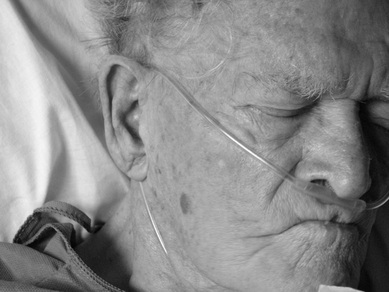 My grandparents were married for 55 years. Growing up, I rarely saw any public displays of affection between them. Yet, their love for each other was indisputable. No, I never heard them call each other “darling,” “honey” or “sweetheart.” In fact, they endearingly referred to each other as “ole fool.” But they were from a different time — a time when girls married their first love and boys asked permission to court their sweetheart. So, I imagine that to them such terms were much too intimate for my young ears. The first intimate thing I witnessed between them was when I was 21. I had flown back home from university because my grandfather had had a stroke, and I rushed into his hospital room to find my grandmother holding his hand. I was momentarily stunned and embarrassed. But I was also overwhelmed by the love and sadness on my grandmother’s face. Can you hold five decades of love, marriage, births of children, the death of a child, and hopes, and dreams and disappointments? It seemed like she was holding it then in that cold hospital room, ever so tenderly in the warm joining of their palms. My grandmother always confessed that her marriage was not perfect. None is. But both she and my grandfather were immensely proud that they had held on — for a lifetime. And she continued to hold on as his circle of life slowly closed. She held on through feedings, sponge baths, and emergency hospital visits. For the next few years she held on to him, sharing his room, talking to him and arguing with him like nothing had changed. But as she sat at his bedside, holding his hand, I could imagine her inner turmoil of wanting him to stay with her, but hating to see him suffer. My grandfather, now a pale figure in a hospital bed, shared this turmoil. Formerly a strong man with sunbaked skin, he was tired of being helpless and longed for release. But his utmost concern was her well-being — the woman that had been his bride at 17. He had first asked permission to sit with this girl in her mother’s tiny sitting room and similarly sought permission to leave her. The last thing my grandfather did before he died was to ask his wife, his lifetime partner of over five decades, if he could go. Gasping for air, he asked her if she would be OK. Still holding his hand, she sobbed and nodded yes. Then, she rubbed the gray sprigs of hair on his balding head and with all her love, everlasting love ... she let him go.  Confessions #1 - I didn’t plan to be a “Super Mom”. The thing is I love babies. I especially love bathing and dressing them, but I didn’t realize that babies grow into teenage-mutant-door-slamming-monsters or that I’d be raising a tribe of them on my own. Did I mention of have SIX of these monsters? Anyway, that’s what happened. And I guess I make it look easy because people call me “Super Mom”, which is really a pleasant euphemism for “the crazy woman with all those kids.” Confessions #2 – Even after 20 years, I still haven’t perfected the art of sneaking out of bed without waking the little munchkins (aka monsters). Yes, one of them is usually in my bed. Most mornings start at dawn with me trying to ease out of bed to grab some coffee and workout before they wake up and start World War III. This is never successful. Usually, as I’m easing off the bed, my 7 year old (with her eyes closed) says, “I want coffee, too.” Then, I sigh and plod downstairs with her and Cat close behind. Cat is actually a cat. I call her Cat and my children call her Sister, but I’m sure I didn’t birth her. Confession #3 – My morning workouts consist more of dancing than actually running on the treadmill. I realize that now because one of my mutant-teenage-monsters secretly videoed me doing just that. Once on the treadmill, iPhone blaring away, I constantly hop-straddle the side strips, gyrating to songs like Gal A Bubble. The coffee is kicking in by then, you see. That’s when my 18 year old daughter usually descends and gasps, “Oh GAWD Mom! Old people can’t dance like that.” FYI: I’M OFFICIALLY 28 YEARS OLD, SO I CAN DANCE HOWEVER I WANT! Whoa, lost it there for a bit. Confession #4 – I’m NOT superhuman, so sometimes I lose it. Anyway, after grumpy, big sister descends, a wave of teenagers rush downstairs - all screaming for coffee (they love coffee), for conditioner (I think they drink that too); one is screaming to get into the shower (they still love to bathe – yes, that’s my fault), one needs her clothes out of the dryer (they hate ironing); another needs the iron because the stupid dryer doesn’t iron clothes well enough, they all need lunch money, they need black socks; one needs me to write a note because there is NO WAY she is swimming in that disgusting pool, boy-twin needs a note because he’s too sick to do PE, and the 7 year old needs a note because I forgot to buy the stuff for her project. Again. Oops. Sorry, honey. Eventually, they all gather at the front door. Good. They’re leaving. But first…they remind me to bring lunch money; I tell them what to cook for dinner; they moan and beg for pizza; the twins start choking each other; I scream at them to stop - they’re going to miss the bus; grumpy, big sister checks herself in the mirror again; I scream that she’s going to miss the bus; the girl-twin announces she’s colouring her curls a fiery red; the 7 year old declares she’s colouring her hair too; I scream that they’re all going to miss the bus; they crowd the treadmill to kiss me bye (which takes a while). And as they finally leave, grumpy, big sister yells over her shoulder, “Enjoy your dirty-dancing workout, Mom.” Rolls eyes. Slams door. Monster. Confession #5 - I AM the crazy woman with all those kids. 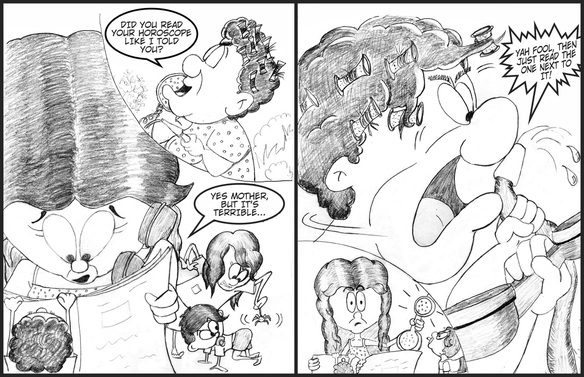 My mother was far from the typical lovey-dovey mothers you see on TV. Faaaar from it. She wasn’t the “let’s have some tea and talk it over” type. She was more the “you better hush ‘fore I knock you out” type. Needless to say, I had a very odd and stressful childhood. For one thing, when I was growing up, mother always insisted she was dying. Yes, she’s been dying for as long as I can remember. She was so serious about this, she listened to the radio each Sunday choosing sad songs for her funeral. The Old Rugged Cross was her top pick. Just As I Am was another. Yes, Sundays were quite depressing. And three things would happen when anyone else on Cayman Brac died: 1. Mother would claim she was dying from the same illness. “Yeah, I got the same thing poor, ole Johnny had. I gonna soon be gone, too.” 2. She would swear she had a premonition of the neighbour’s death in a dream. 3. She would swear the neighbor’s ghost visited her during the night. Do you know how stressful it is when your mother is a ghost whisper? Mother was also NOT the soothing type. Sympathy was rare for fear of raising children who were “soft.” So, her reaction to me standing there with the top half of my toe stubbed off, was, “Wha’don’t kill yuh, makes yuh stronger.” Then, she’d generously dump flour on my wounded toe and send me off to play. Limping. No disinfectant. No, I quickly learned not to ask for that or the rubbing alcohol might come out. Band-Aids? Not a chance. If I was lucky, she would fashion a crude (horrendously embarrassing) bandage from a ripped t-shirt around my disfigured toe. There. Now, limp away and go play. And mother never said things like, “Don’t worry. Everything will be okay.” Instead, she chanted, “That’s wha’ yuh get because you don’t listen to nothing I say.” But anxiety was a normal part of life with mother for other reasons - she constantly had “bad feelings” (aka foreboding feelings), her “bad eye” was always jumping and her sinister dreams and superstitions usually predicted some ominous occurrence. For example: • If she dreamed about white sand – someone was going to die. • If a black cat crossed the left side of the road – someone was going to die. • If she dreamed about dirty water – someone was going to die. • If she saw a black snake – someone was going to die. • If her bad eye jumped – something bad was going to happen – someone was probably going to die. • If her good eye jumped…wait… HER GOOD EYE NEVER JUMPED. Mother even admonished us if we laughed too much. She’d say, “Laughing brings crying.” Which is code for “someone’s going to die.” As I got older her pessimism intensified. Prior to the birth of my first child, my (psychic) mother (who was still alive by the way), predicted that I would have an ugly baby. Her reason? Because two attractive people always have ugly children. This was mother’s ancestral theory – apparently our ghost-whispering ancestors were experts in genealogy. Still, I tried to benefit from her “no-nonsense” attitude and wisely chose to disregard her other odd opinions. Eventually, I dumped flour on my own stubbed toes and as I watched the white flour clump and turn a deep maroon, I’d hear her saying, “Wha’don’t kill yuh, makes yuh stronger.” In that way I grew up tough, unafraid of hard work, oblivious to ghosts, completely un-phased by the notion of ugly babies, and in possession of copious material about mother to be used for a hilarious bestseller. At some point in time, all nonprofit organizations and corporate citizens find themselves needing images. So, they call up the cousin of a board member and …tadaa - the pictures for the next newsletter are ready to go …kinda’ – though no one is quite sure what they’re pictures of. The other scenario - they call in a professional, get charged an outrageous fee and are left with cold, generic, “stock-like” photos. What I’m trying to say is – images are one thing, but compelling images are quite another. Compelling photography can be a powerful tool for social change. Here are 4 reasons why compelling images are vital to any social marketing effort:  To Attract Attention Images easily attract the attention of people, which is not surprising considering that a great portion of the rear brain is devoted to visual processing and half of the cortex is involved in sight. But emotional images do more than just get your attention. They draw you in and arouse your curiosity. They make you want to learn more like this one below that I was commissioned to capture for A-Nahda Women’s Society in Saudi Arabia. Wondering why this boy is standing there looking so sad? This is what advertising greats call “story appeal” which readers find engaging. Images with “story appeal” peak the reader’s curiosity and prompts them to read the ad. This is very important if you are trying to inform the reader about an important social issue or event or if you are trying to convince them to change risky behaviors. 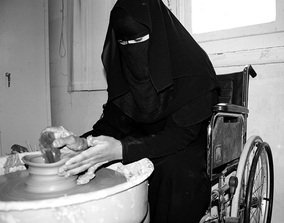 To Convince People always say, “seeing is believing” and this is crucial in cause marketing. Compelling images have the power of persuasion which is vital to convince stakeholders that you have an authentic need. It’s one thing if you tell people that children are starving in Africa, but it’s more convincing if you show them an image of an emaciated child with flies buzzing around his face. Provocative images are also great vehicles for nonprofits to powerfully demonstrate how donations are being used. The NGO that commissioned me to capture this image on the right wanted culturally sensitive images to authenticate their programs for disabled women in the Kingdom. 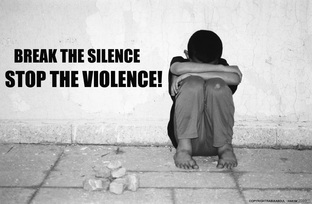 To Maximize Impact When There is Limited Time & Space Most people are familiar with the adage “a picture is worth a thousand words”. In other words, compelling images can be so powerful words become unnecessary. And in social marketing this is extremely important given the limited time of the reader, the limited space for copy and the limited resources of many organizations. Truly evocative images can exceed the impact of language. 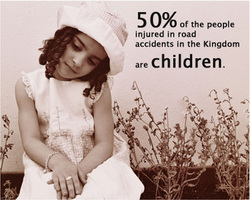 To Be Bettered Remembered Engaging images that are emotionally charged are more memorable. And being “unforgettable” is vital to nonprofits and corporate citizens who are trying to raise their cause above the “noise” of other organizations competing for awareness, funds and media attention.  On any given day, newspapers host articles on numerous social projects and fundraising galas; highways are adorned with banners announcing upcoming social initiatives; posters at doctors’ offices offer constant reminders of health issues, and on and on. Therefore, most cause marketing clients assume that these are the best ways to communicate their cause. And communicate you must - because of the plethora of organizations competing for media spots, volunteers and donor funds, you’ve got to find a way to make your cause stand out. However, there are simpler things that can make your cause become foremost in the publics’ minds and, hopefully, foremost in their case for contribution. One of the most important things that make a cause pop is the Cause Leader. The characteristics of the Cause leader, his/her personality and leadership style, even the way he/she dresses, can affect the organization. Below are a few tips for Cause Leaders who want to make their cause so irresistible, they pop! 1. Be a Cause Champion: How often do you tell people about your organization? If you’re going to make your organization stand out from the crowd, you’d better develop the “gift of the gab.” In short, you must learn the art of self-promotion. Tell everyone you come in contact with about your organization and the creative solutions you’ve developed to relieve societal ills. Promoting your ideas is not just useful – it’s vital. Remember, promoting your cause is not about arrogance - it’s about helping others. 2. Dress the Part: Some cause leaders often color coordinate their outfits to their cause or to the color of their logo, which quickly allows people to identify with their cause. The chairperson of the breast cancer association should always wear something pink or pink ribbon. The director of the anti-smoking association could wear an anti-smoking pin. These simple tactics can become “triggers” – giving you and your cause instant recognition and keeping your cause foremost in the minds of stakeholders. Furthermore, these tactics consistently convey your commitment to your cause which deeply influences all your stakeholders. 3. Communicate with Passion and Authenticity: Once you commit to become an outspoken leader, focus on how you communicate about your cause. Are you spewing out boring statistics or using technical terms that the average person would not understand? Use the simplest terms possible when talking to people about your cause, but make sure you do it passionately and optimistically. Optimistic people on a mission are sticky – we’re attracted to their excitement and to their optimism that they can make a difference, prompting them join you on your cause. However, authenticity is of utmost importance. If your stakeholders feel that you are not genuine, they won’t support your cause and even worse - they may suggest others don’t either. 4.Use the Ripple Effect: Most people take up a cause and start thinking about how they can get the pubic, government or other organizations on board, neglecting to get their friends and family on board first. This happens for a variety of reasons: maybe they will discourage you…and maybe not. Family and friends can also become great champions for your cause because they are more emotionally involved with you and typically know more about the motivation behind the cause. Were your neighbors’ also victims of a home invasion? If they were, undoubtedly they would support your crime prevention campaign. Are you a survivor of breast cancer? If you were, your family members should easily support you after witnessing your battle with this deadly disease. Employees and work colleagues are also excellent sources of support, whether it is for funding, volunteer work, keeping you motivated on your mission or just promoting your cause through word of mouth. This is what I call a positive cause ripple. So seek support from those closest to you and then work outwards. Remember, this is how a wave travels across a pond. 5. Tell the World: Cause leaders need to constantly communicate their successes – not just their needs. People like to support organizations they feel are making a vital difference. Cause leaders sometimes forget this and constantly cite the needs of their organization and neglect to mention their successes – even if they are small. Promoting your organization’s successes emphasizes the effectiveness of the organization and you as an effective leader. So, share your good news and consistently highlight the positive impact your organization is achieving on your website, press releases, newsletters and social media. 6. Focus on Telling Stories Not Statistics: Always try to find the story behind the statistics and communicate these to your stakeholders. Statistics are important, but use them liberally. People are dramatically affected when they see and read about the real people your cause helps. Did watching your mother succumb to breast cancer inspire you to found this organization? Let people know that. Did you highlight the emotional stories of the orphans your organization supports? Dramatic visuals and compelling stories are vital to make your cause pop. Remember, statistics are cold, factual; stories are heartwarming, moving and personal. |
AuthorLady Rabia Abdul-Hakim is a mu;ti-genre author, international speaker, Communications & Branding Strategist for Go Women Global and a Champion of the UN's Women's Empowerment Principles . She is also the Founder & CEO of ContessaBlack Entertainment and the former Co-founder of BIG Cause (Arabia), a cause marketing communications agency in the Kingdom of Saudi Arabia. ArchivesCategories
All
|
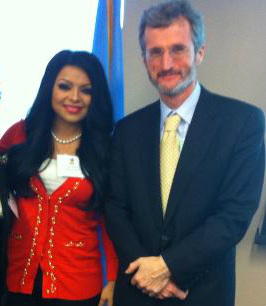
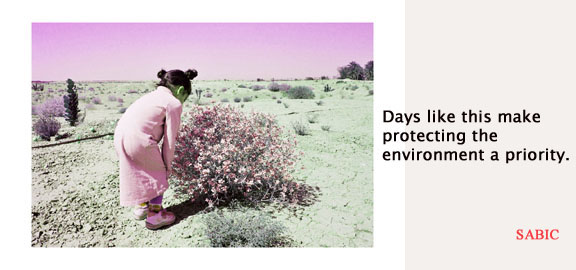
 RSS Feed
RSS Feed
